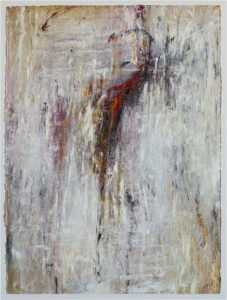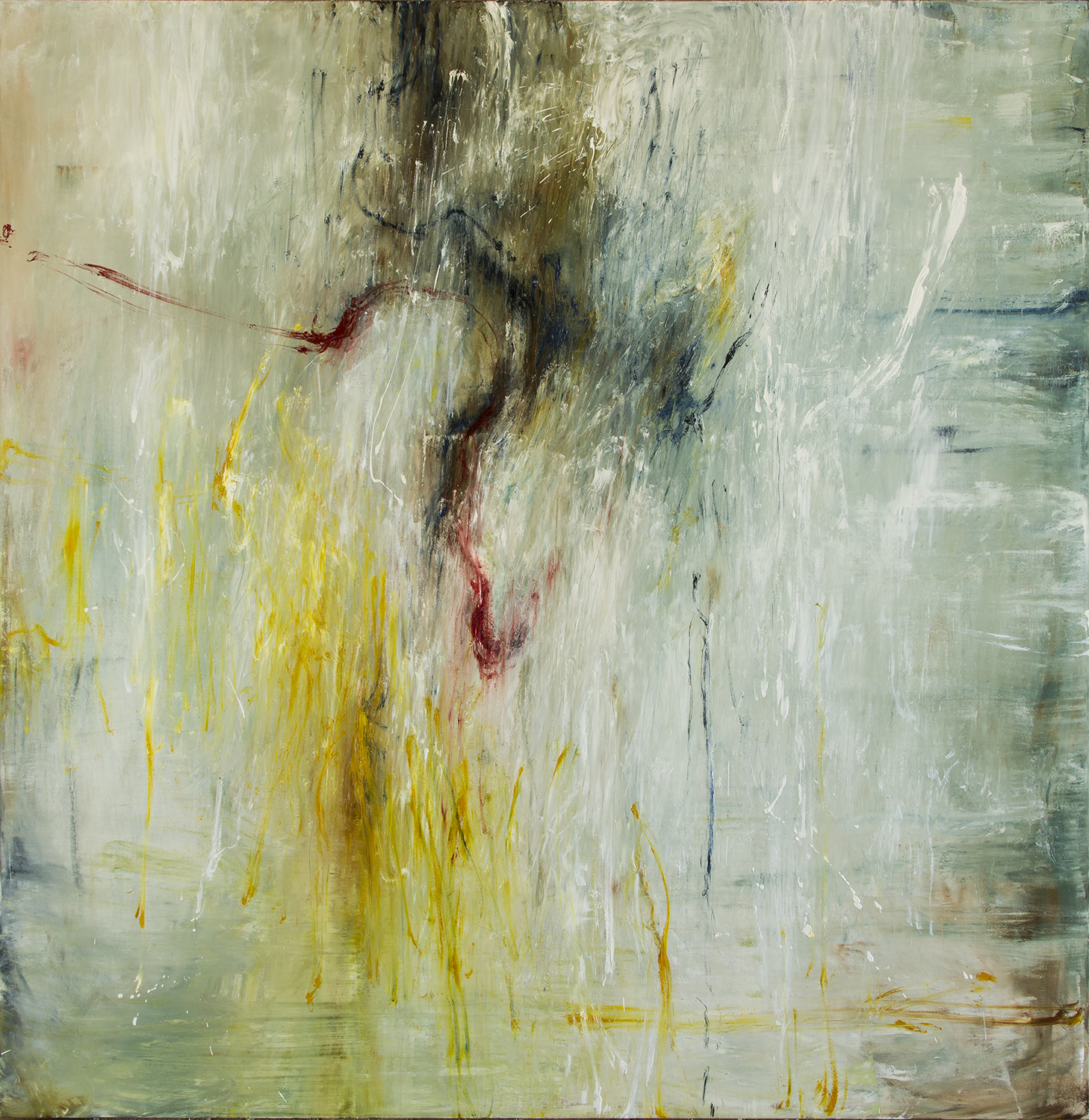While abstract art often begins with inspiration and develops spontaneously, Lawrence Fodor approaches his canvasses in a different manner, basing his paintings on historic works. Loosely connected to abstract expressionism, Fodor works in a style in which non-specific figurative components dominate his paintings. Early in his career, he spent numerous hours among great master paintings and sculptures in European museums, copying laboriously. He has long admired Peter Paul Rubens, Jean Etienne Ramey, Michelangelo Buonarroti, Leonardo Da Vinci, Théodore Géricault, JMW Turner, the Laocöon, and ancient Greco-Roman sculptures.

Lawrence Fodor, Theseus Slaying the Minotaur II (after Etienne Jules Ramey), 2015-16, courtesy of the artist and SCAPE.
In time, Fodor began exploring how works by these masters had been commissioned by clergy or wealthy benefactors with the intention of promoting their religious and philosophical agendas. To more fully understand these pieces, he again re-created them while analyzing their compositions, structures, colors and spaces. Then by using various tools, he camouflaged their figurative aspects, maintaining their basic compositions and colors. Re-contextualizing and re-interpreting these “appropriated” works, he obliterated their blatant visual aspects and even iconography.

Lawrence Fodor, St George and the Dragon III (after Rubens), 2015-16, courtesy of the artist and SCAPE.
With his deeper intention subject to interpretation, Fodor refers to the “outdated” aspects of these centuries-old myths, yet his abstract paintings invite conversation with collective history and memory. Ambiguous figurative elements can be discerned within the broad swaths of gestural blues, greens and whites that sweep across the canvasses. If one looks closely, these elements are likely to suggest horses with knights, portraits and even ancient sculptures.

Lawrence Fodor, MB Study X (after Michelangelo Buonarroti), 2015-16, courtesy of the artist and SCAPE.
Completed in 2015-16, the nine large textural and passionate abstract artworks at SCAPE were created using oil, wax, alkyd resin and linseed oil. They include Theseus Slaying the Minataur II, based on Jean Eitenne Ramey’s 1826 painting with the same name; St George and the Dragon III, after a Rubens 1605-07 painting; Hercules and Anaeus I, after a Greco/Roman sculpture; and MB (Michelangelo Buonarroti) Study X, based on a Michelangelo drawing.
Lawrence Fodor, “Amended Mythologies,” March 4 – April 8, 2017 at Southern California Art Projects + Exhibitions (SCAPE), 2859 East Coast Highway, Corona del Mar, CA, 92625, www.scapesite.com.



















0 Comments